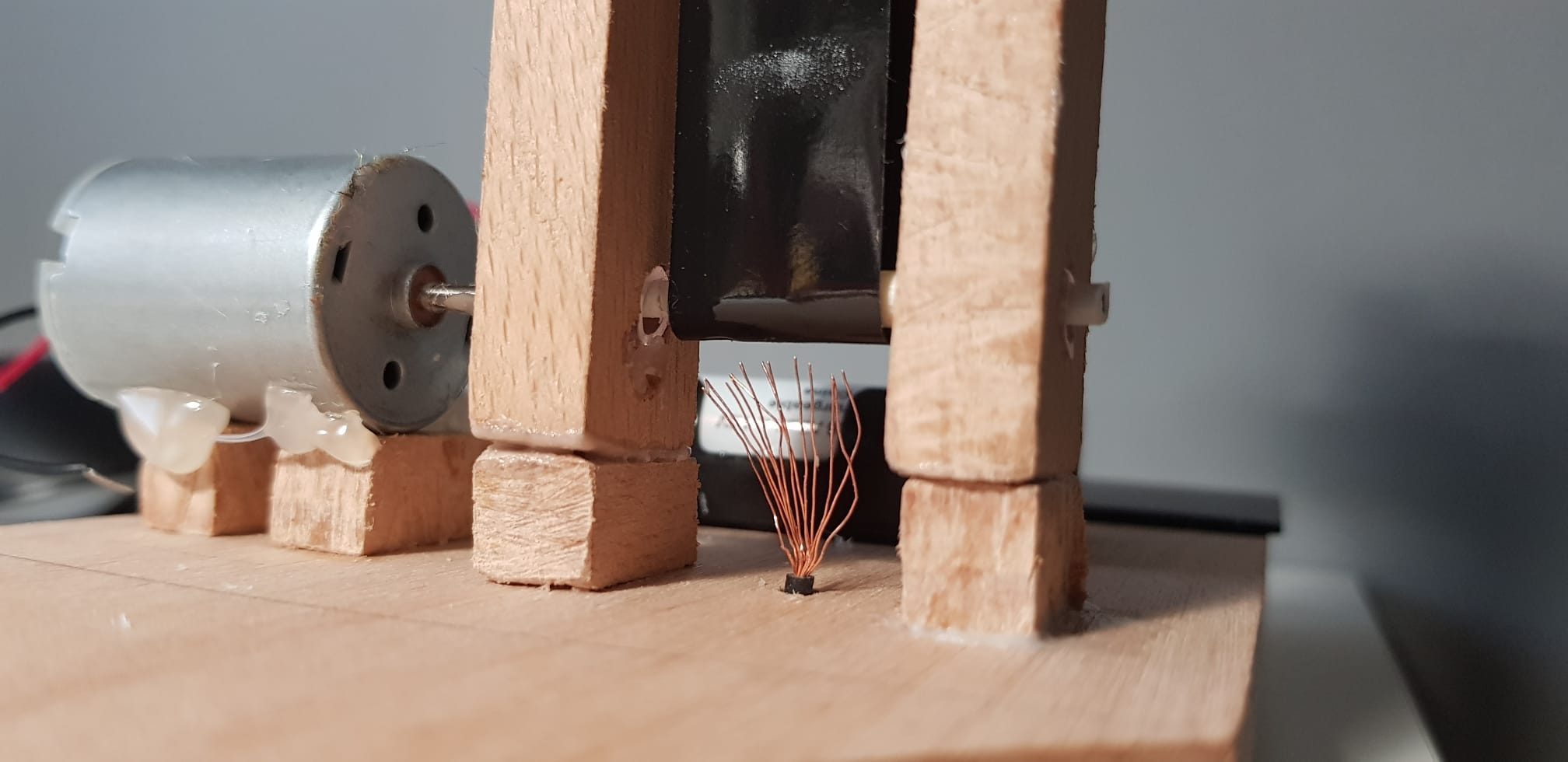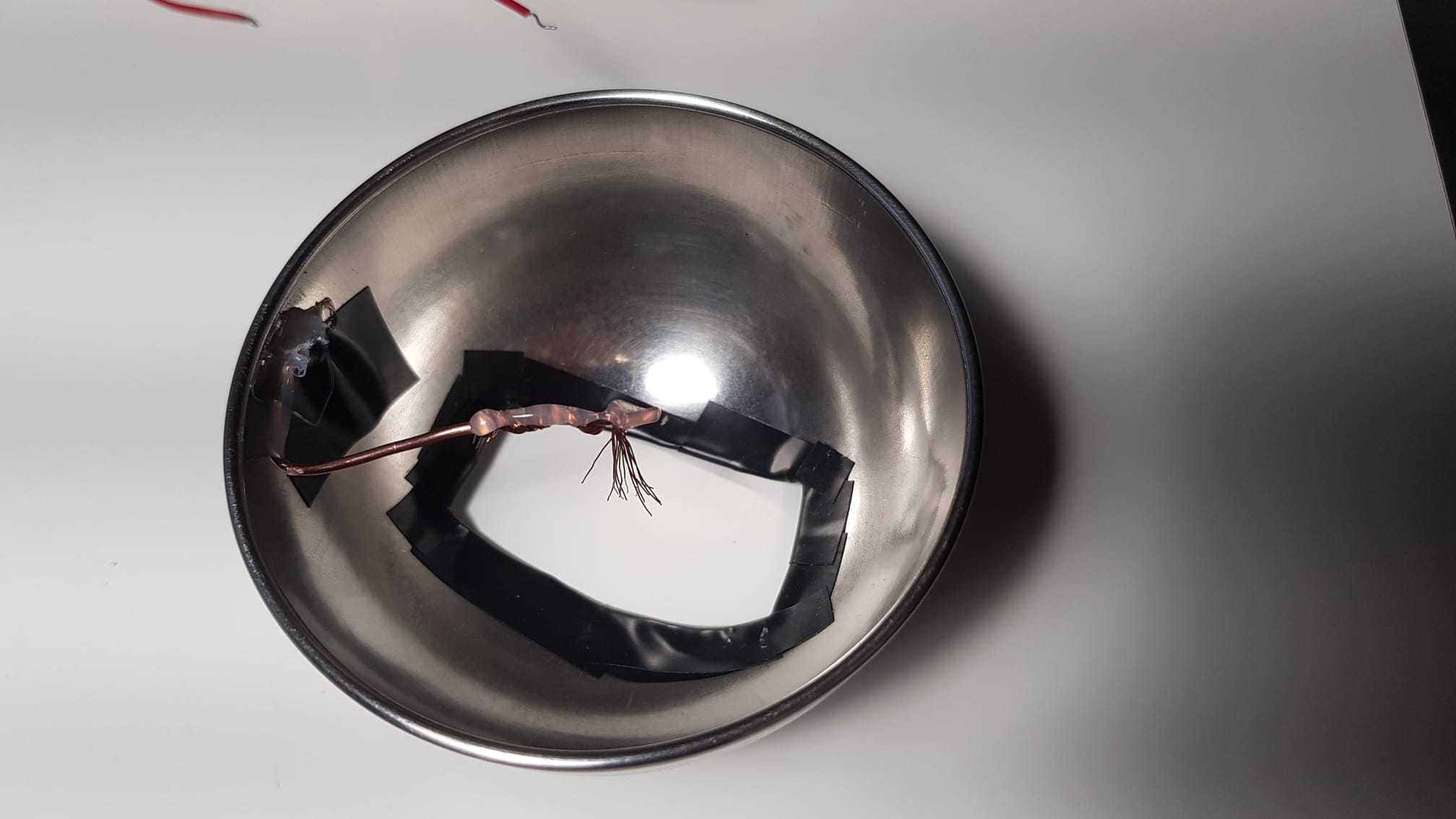So, I'm trying to build a Van de Graaff generator from household items, but after a lot of tries, I'm still unable to get it working and was hoping someone here could help.
The problem is that no matter how long I leave it to run, there's just no charges accumulating on the dome at all.
Here are my observations and some things I measured:
- the belt is spinning and there is enough friction between the belt and the rollers
- the bottom comb is connected to the ground (measured with my multimeter)
- the top comb is connected to the inner side of the dome (measured with my multimeter)
- the belt is not touching the combs
- voltage and current (when the machine's running) between the dome and ground are constantly 0
Now for the materials I used:
- I built the main support structure out of wood
- the combs are just spread out copper wire
- the bottom roller is made out of silicon tube
- the top roller is made out of wool wrapped around a piece of pen
- the belt is a piece of electric tape with the sticky side facing outwards
- the dome is made out of 2 metal hemispheres held together with some electric tape
Here are some pictures of the machine:





I've searched the internet and found some forum posts as well as sites for debugging Van de Graaff generators and followed their steps for troubleshooting, but with no success.
I should also mention that I've already changed the material of the bottom roller and the belt (the roller used to be polypropylene and the belt used to be some elastic cloth that I sawed into a belt) and I also made sure that the rollers are leveled and that the belt is centered.
(Also, I know that connecting things with hot glue isn't a great idea, but it's the best thing I had)
